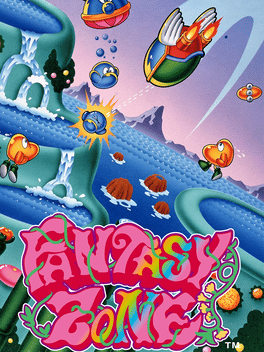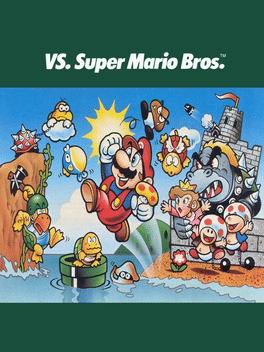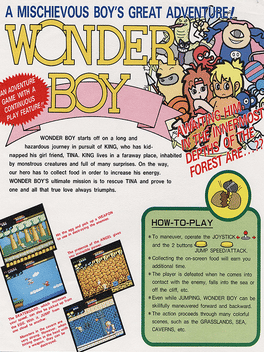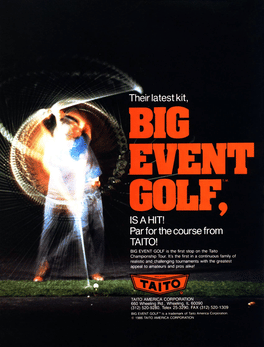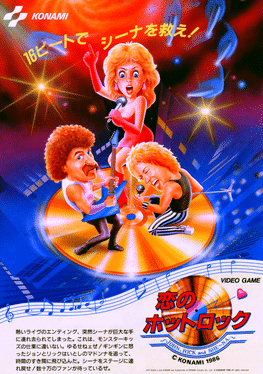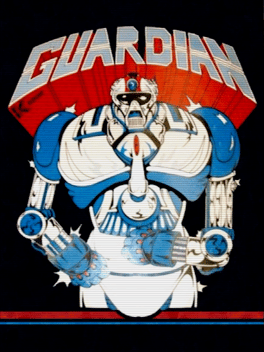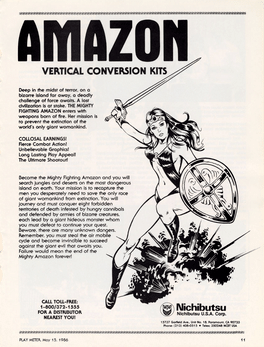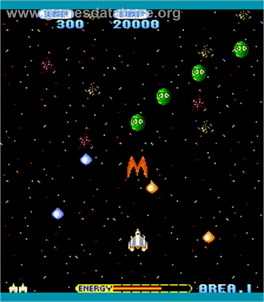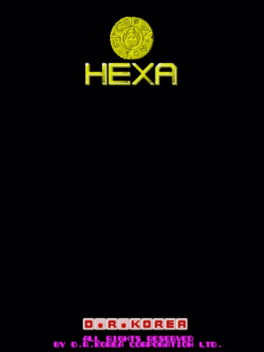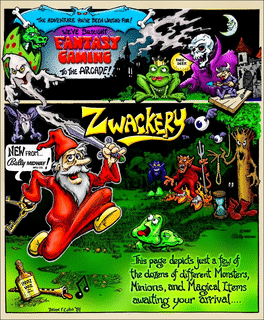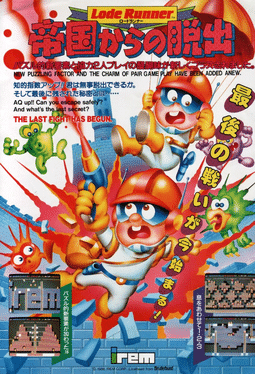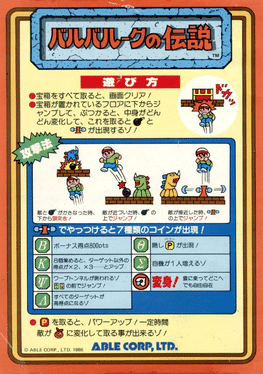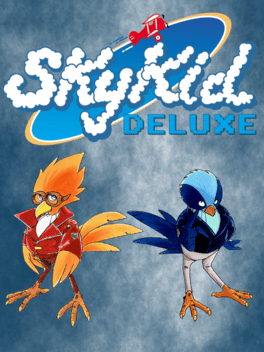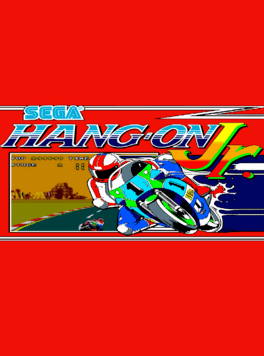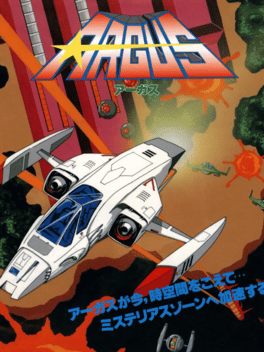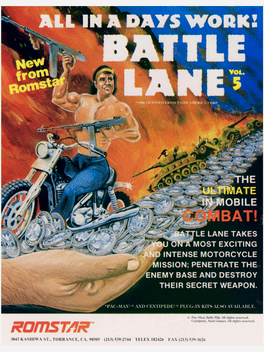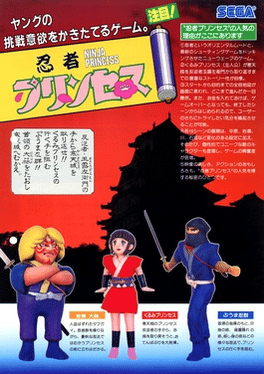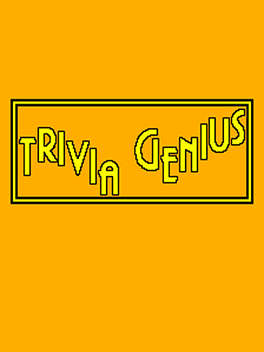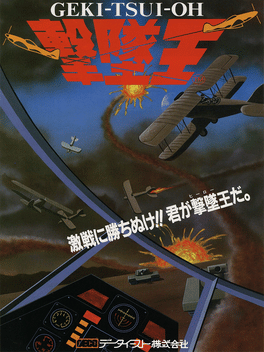New Arcade Games - Page 104
-
Fantasy Zone
1986
Fantasy Zone
1986
star 7.8The Fantasy Zone is a solar system consisting of eight brightly colored, fantastic planets. The evil Menons are trying to take over all of the planets in the Fantasy Zone by using misappropriated foreign currency to build their forces. It is the player's job to recover all of the coins and save the solar system! Fantasy Zone is an arcade style shooter for one or two players. The goal is to destroy all of the creatures on each planet and collect as many of the lost coins as possible. At the end of each level is a large enemy that will have to be defeated before moving on to the next world. At various points in the game, the player will be able to find a parts shop, which allows purchasing improvements for his spaceship, including better weapons and faster engines. -
Vs. Super Mario Bros.
1986
Vs. Super Mario Bros. is a two-player VS. System version of Super Mario Bros. This game has higher gameplay difficulty than the original Super Mario Bros., with fewer warp zones and power-ups, and more enemies. Six new levels were created for the game, all of which were reused in Super Mario Bros.: The Lost Levels. -
Wonder Boy
1986
Wonder Boy
1986
star 6.9Wonder Boy is a 1986 platformer video game published by Sega and developed by Escape (now known as Westone Bit Entertainment). It was the first in the long-running Wonder Boy series of games and was followed up by five sequels, Wonder Boy in Monster Land, Wonder Boy III: Monster Lair, Wonder Boy III: The Dragon's Trap, Wonder Boy in Monster World and Monster World IV. It was also the basis for the Adventure Island series. -
Big Event Golf
1986
Big Event Golf
1986
The player is a participant on an 18-hole championship golf course. His objective is to acquire the lowest score possible. The rules used in this game are the same as in actual golf. -
Koi No Hotrock
1986
-
Guardian
1986
-
Soldier Girl Amazon
1986
Soldier Girl Amazon
1986
Soldier Girl Amazon is a shooter released by Nichibutsu in 1986. The soldier girl Amazon fights on a completely different Earth, dominated by strange beasts and crazy cyborgs. -
Rafflesia
1986
Rafflesia
1986
Rafflesia is a top view vertical scrolling shooter where the screen scrolls constantly as you fly up the screen in your spacecraft. The aim is to blast or avoid the various aliens that move around the screen to finally face the final boss Rafflesia. As you blast and avoid, you are equipped with two weapons, both are forward firing weapons but the second one is more powerful and when in use decreases your energy. Falling down the screen constantly are tears from Rafflesia and when collected these increase your energy. If you are hit by an alien or it's weapon then you lose one of three lives. Two players can play with each player taking it in turn when the other player is killed. -
Hexa
1986
Hexa
1986
Blocks in groups of three will descend from the top of the screen. They are aligned vertically and will have a colored symbol within. You must place them on the stack so as to have three of a kind in rows in any direction. If you press the Rotate button, the bottom block will move to the top, thus shifting the pattern. If you press the Power Blocks button, the next triplet to fall will be three blocks, all with a red 'P' in them. Whatever color/symbol the power blocks land on top of will disappear from the screen, thus maybe making several three-way line ups. You get only two "Power Blocks" in the first level. -
Zwackery
1986
-
Lode Runner - Teikoku Karano Dasshutsu
1986
In 1986, Irem released their fourth and final arcade conversions of Lode Runner. Like the previous two, it contained 30 selected levels from the 150 original levels. However, it is the only version to contain a new mode of play: two player cooperative. In this mode, two players must work together to capture every gold ingot in 18 stages, some of which cannot be reached without a pair of players working together to achieve their goal. This is the only version out of Irem's four arcade releases that was not translated into English and sold directly to the American market. -
Baluba-louk no Densetsu
1986
Baluba-louk No Densetsu is a platform arcade game released by Able in 1986. An explorer must get all the treasure chests while avoiding the monsters. -
Sky Kid Deluxe
1986
Sky Kid Deluxe
1986
You play a bi-plane pilot on missions to bomb enemy targets. The game has a left-to-right scrolling screen where you shoot at enemy planes and trucks. Fly down and pick up the bomb as you go along. -
Tehkan World Cup
1986
Tehkan World Cup
1986
Tehkan World Cup, aka. Tecmo Cup, is the first multi-player soccer game featuring a trackball controller. Programmed by Michishito Ishizuka it was released to arcades in 1985 by Tehkan, Ltd., the former name of Tecmo, Inc. Its arrival coincided with the buildup to the 1986 FIFA World Cup. It featured the then colors of several of the world's top teams such as West Germany, Argentina and Brazil, although it did not mention any team by name. -
Hang-On Jr.
1986
-
Argus
1986
-
Battle Lane Vol. 5
1986
Battle Lane Vol. 5
1986
The fate of the country hangs in the balance. Break through the enemy checkpoints using your machine gun, bazooka and driving skill. Pick up more bazookas five missiles each along the road. Finally, enter the enemy base and destroy their secret weapon. The game has five checkpoints with the base coming after the fifth checkpoint. Each wall is broken with five missiles. Hint: shoot seven to ten defenders before trying for the wall. -
Sega Ninja
1986
Sega Ninja
1986
Ninja Princess opens with a short cutscene of the princess Kurumi getting carried away in a palanquin - her castle Kanten has been seized by the traitor Zaemon Gyokuro, who obviously wants to get rid of her. But she escapes, transforms into a kunoichi and sets out to regain her home. Even though it's basically all about running around killing people with knives, Ninja Princess clearly wants to be a girly game. Everything is bright and colorful with cartoon-like proportions, and when Kurumi gets hit by an enemy, she just sits on the floor and starts crying. It's hard to resent the game its stereotyping, though, cause it's just cute as a button - no surprise here, after all the graphics were designed by Flicky artist Yoshiki Kawasaki and Reiko Kodama of Phantasy Star fame. -
Trivia Genius
1985
Trivia Genius
1985
"Trivia Genius" is a quiz game developed for MAME (Multiple Arcade Machine Emulator), released in 1985. The game focuses on testing players' knowledge through various trivia questions. The core gameplay involves answering trivia questions presented in a quiz format. -
Zero Target
1985
Zero Target
1985
Zero Target, known in Japan as Shooting Down King, is a shooter video game developed by Data East and released in 1985 for arcades. In Zero Target the player controls a fighter plane, with the action seen from a first person view inside of the fighter's cockpit. The player can move the view in any direction, with a targeting reticule in the middle of the screen used to aim at enemy fighters.
